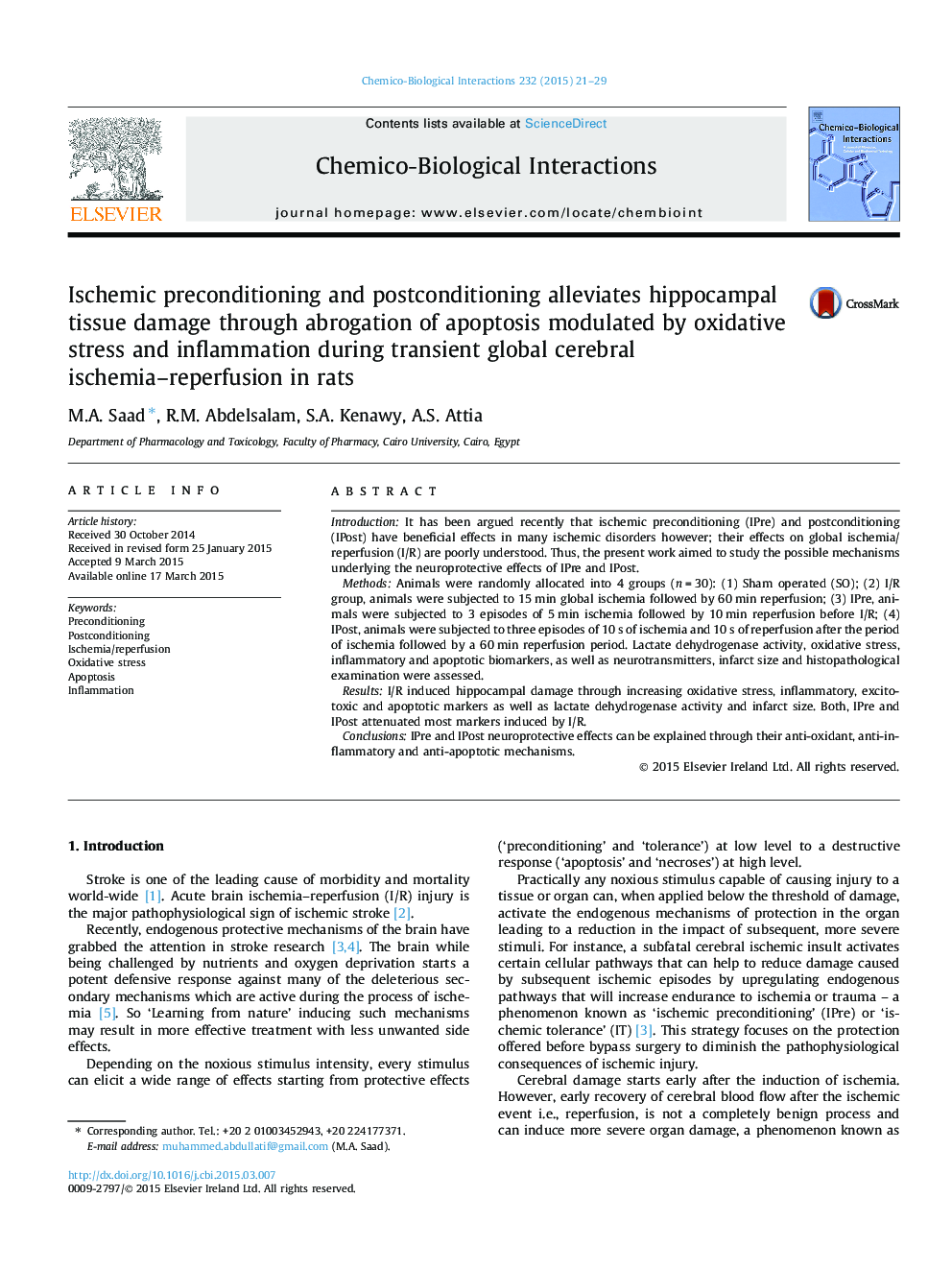| Article ID | Journal | Published Year | Pages | File Type |
|---|---|---|---|---|
| 2580199 | Chemico-Biological Interactions | 2015 | 9 Pages |
•Ischemia reperfusion increased the production of reactive oxygen species.•Ischemia reperfusion induced inflammatory, excitotoxic and apoptotic markers.•Ischemia reperfusion increased cerebral infarct size and lactate dehydrogenase.•Ischemia reperfusion showed pyknosis of pyramidal cells of the hippocampus.•Ischemic preconditioning and postconditioning reversed most of the previous damage.
Introduction: It has been argued recently that ischemic preconditioning (IPre) and postconditioning (IPost) have beneficial effects in many ischemic disorders however; their effects on global ischemia/reperfusion (I/R) are poorly understood. Thus, the present work aimed to study the possible mechanisms underlying the neuroprotective effects of IPre and IPost.Methods: Animals were randomly allocated into 4 groups (n = 30): (1) Sham operated (SO); (2) I/R group, animals were subjected to 15 min global ischemia followed by 60 min reperfusion; (3) IPre, animals were subjected to 3 episodes of 5 min ischemia followed by 10 min reperfusion before I/R; (4) IPost, animals were subjected to three episodes of 10 s of ischemia and 10 s of reperfusion after the period of ischemia followed by a 60 min reperfusion period. Lactate dehydrogenase activity, oxidative stress, inflammatory and apoptotic biomarkers, as well as neurotransmitters, infarct size and histopathological examination were assessed.Results: I/R induced hippocampal damage through increasing oxidative stress, inflammatory, excitotoxic and apoptotic markers as well as lactate dehydrogenase activity and infarct size. Both, IPre and IPost attenuated most markers induced by I/R.Conclusions: IPre and IPost neuroprotective effects can be explained through their anti-oxidant, anti-inflammatory and anti-apoptotic mechanisms.
